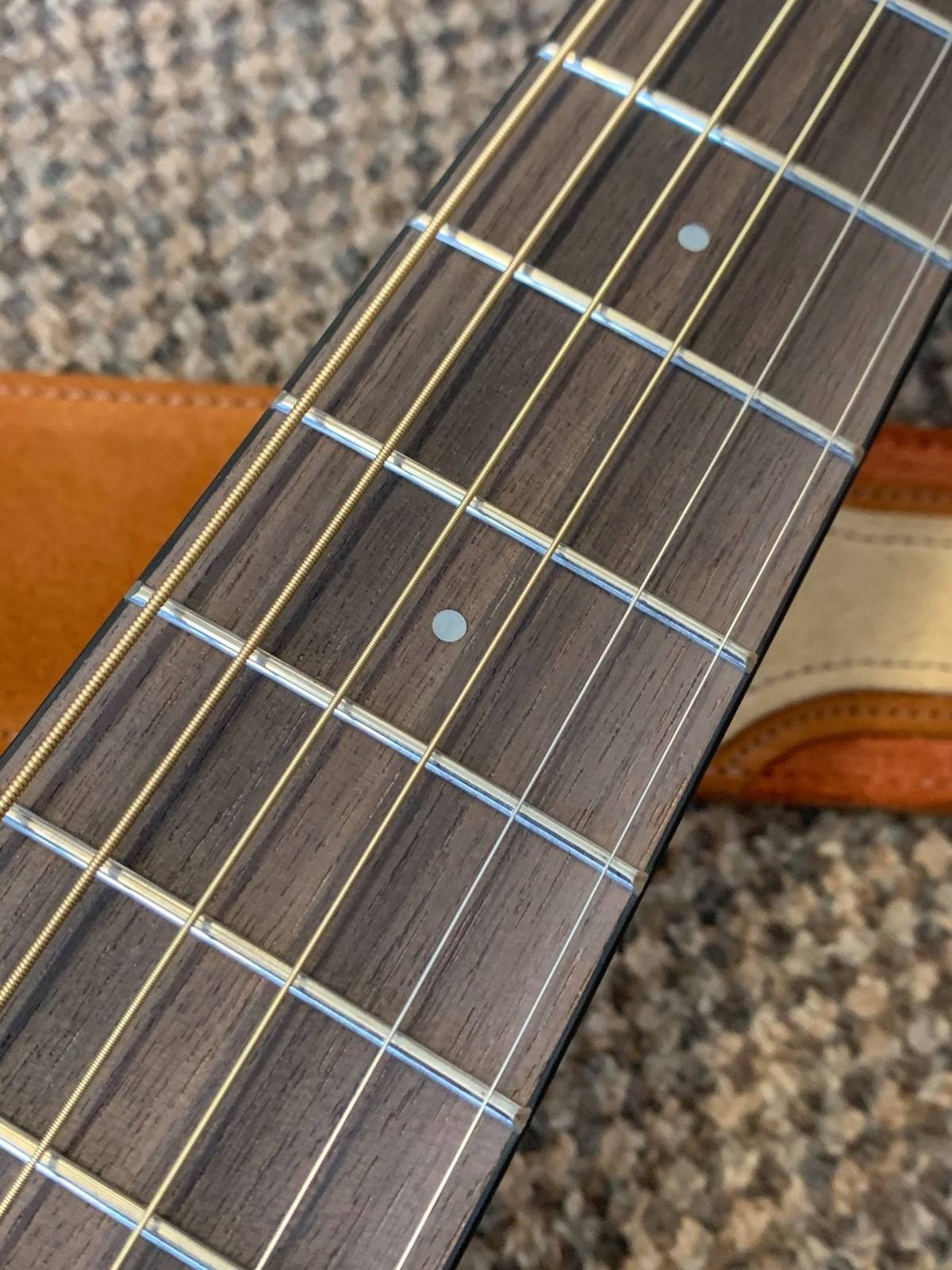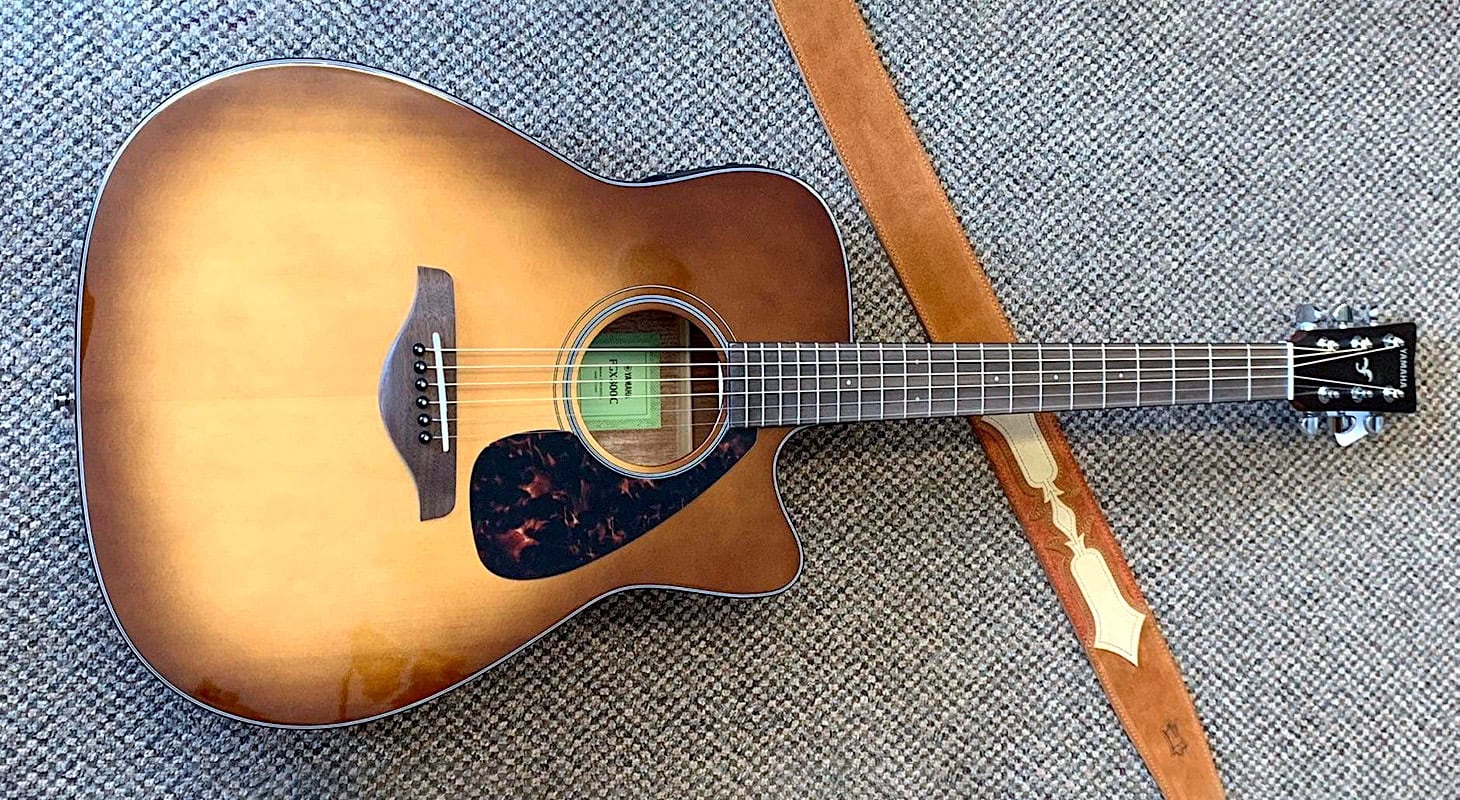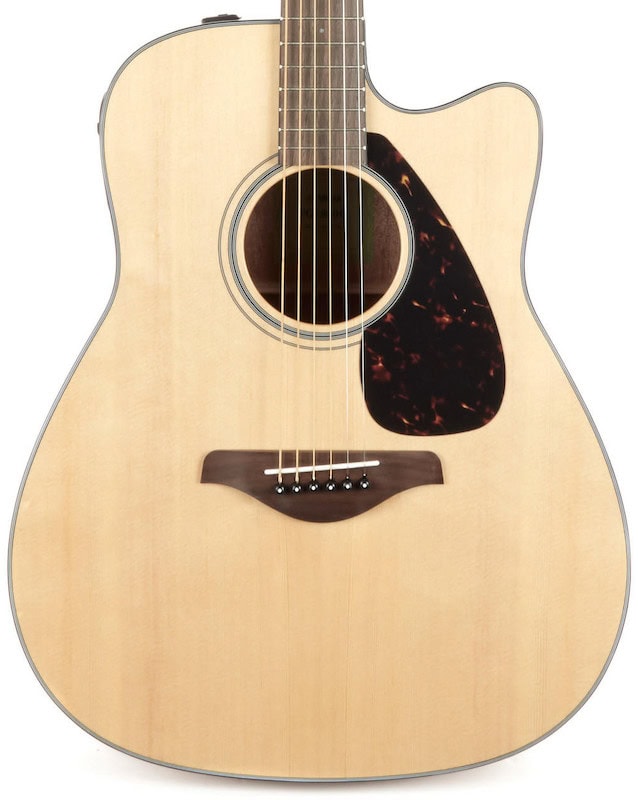I love a top-shelf well-made acoustic guitar. Those beautiful old Martin and Gibson instruments command a high price, and for good reason. They’re some of the most remarkable instruments ever made, and, to me, sum up the intersection of art and science that underpins all truly great guitars.
For a lot of the gigs I play, however, a stunning pre-war Martin or a handmade dreadnought would be a major source of stress! I’d be worried about dinging the guitar, getting sweat on it, or, worse, an intoxicated member of the audience spilling their drink all over my prized instrument.
For some applications, a well-made, reliable, affordable instrument is undoubtedly the way to go.
Enter the Yamaha FGX800C, an awesome acoustic-electric that punches well above its weight.
Sneak Peek
Solid spruce top, balanced tone, and a slim, comfortable neck that handles cowboy chords and bluegrass licks with ease. Its easy feel and clear voice make it inviting to pick up and play for hours.
Bang for Buck
When it comes to guitars in this price range, the quality varies a lot. With the Yamaha, however, it’s clear that the legendary Japanese builders have paid attention and invested in certain high-end appointments to ensure value for money.

Yamaha FGX800C - Bridge
When I first tried this guitar, I was impressed by its broad, full unplugged voice. I ran through a few big, six-note cowboy chords, and they all sustained and rang out with pleasing authority. I’ll be the first to concede that it lacks the booming, authoritative low end of a larger body or a fully solid acoustic guitar. This was particularly noticeable as I started playing through sparklier voicings further up the neck.
The neck, as I expect from most Japanese guitars, is comfortably slender. It’s not exactly Ibanez Wizard thin, but it’s slimmer than the hefty profile of a classic Gibson. In my estimation it’s probably closest to Fender’s C profile.
I also found the action out of the box to be very comfortable. I’ve found on some acoustic guitars that lower action can cause the notes to fret out or lose sustain, but that’s not the case here.
In fact, the neck was thin enough, and the action low enough, that I could run through a few classic bluegrass licks, especially from the G position.

Yamaha FGX800C - Fretboard
The unplugged playing experience, which in my opinion is the most important for acoustic guitar, was excellent. While it doesn’t sound and play like a $5,000 instrument, it certainly feels much nicer than its price would otherwise suggest.
Room for Improvement
Unfortunately, there were two major downsides to this guitar, and any serious player should pay attention to them.
The first major issue I had is that I picked up this Yamaha with the intention of playing it live. I imagine that many guitar players in my position might do the same. It’s a tempting prospect to have a reliable, inexpensive instrument to take to gigs.
When playing and singing, I like to stand up. I sing much better standing than sitting, and almost all of my acoustic guitar playing is done as a soloist.
Unfortunately, Yamaha failed to anticipate this use case, and this guitar lacks strap buttons! I’m used to every guitar I play coming with strap buttons straight out of the factory. I barely play sitting down at all any more: I even tend to practice standing up. To use this guitar while standing, I’d either have to take a drill to this beautiful instrument and install a strap button myself, or attach a guitar strap to the neck. Neither option appeals to me.
The other issue I found was that, like pretty much all acoustic guitars, the Yamaha FGX800C sounds much better unplugged than plugged in. Yamaha’s stock pickup array isn’t awful by any stretch of the imagination. It isn’t overly fizzy or zingy like some older acoustic pickups.
Unfortunately, I’m somewhat spoiled by the excellent palathetic pickup in my Takamine, my main acoustic guitar. By comparison, this acoustic guitar lacks the depth and dynamic range, and although I could comfortably take it to most gigs, there are better acoustic pickups out there.
The easy solution here, of course, is to either install an aftermarket pickup or use a sound hole pickup instead of the stock system. At this price point, upgrading the guitar isn’t necessarily a dealbreaker.
A Songwriter’s Best Friend
I’d make the case that Yamaha’s beginner to intermediate priced guitars are among the best on the planet in terms of value for money.

Yamaha FGX800C - Headstock
I found that this beautiful guitar played easily, sounded good, and stayed in tune with no problems at all.
Although the amplified sound and lack of a strap button left a little to be desired, this is still a well-made instrument. Not least among its selling points is a solid spruce top, responsible for its excellent tone.
Heavily gigging guitarists might want to look elsewhere for a guitar with a better amplified sound, especially if, like me, you prefer to play standing up.
However, as an at-home guitar for couch practice or sitting around writing songs, it’s hard to argue with this instrument.
To my ear, it sounds best playing big, friendly chords. When I’m writing songs, I tend to play simple cowboy chords rather than complex voicings, especially in the early stages of writing. To that end, this guitar really shines: I could make out every note in a chord, making it very easy to sing along to.
With this in mind, I strongly recommend this guitar to beginner to intermediate players who haven’t yet branched out into more complex chord voicings. In particular, players who haven’t headed into specialized acoustic solo techniques like walking bass lines and jazz voicings will get a lot out of it.
The most important thing for guitar players early in their musical journey is enjoying the simple act of playing. This guitar might well be the perfect vehicle to encourage a budding acoustic player to keep at the instrument, especially if they’re looking to start writing songs.
Final Word
Yamaha often feels like the best kept secret among Japanese guitar builders. Ibanez and ESP get a lot of credit, particularly among shredders, but Yamaha has been quietly building awesome guitars at a competitive price point for decades now.
Any guitar player looking to add an awesome acoustic to their collection without breaking the bank will love the Yamaha FGX800C.
My Verdict
A well-built, great-sounding acoustic for home use, practice, and writing sessions. Not ideal for frequent live work without mods, but for sitting down and playing big, open chords, it’s hard to beat at this price.

